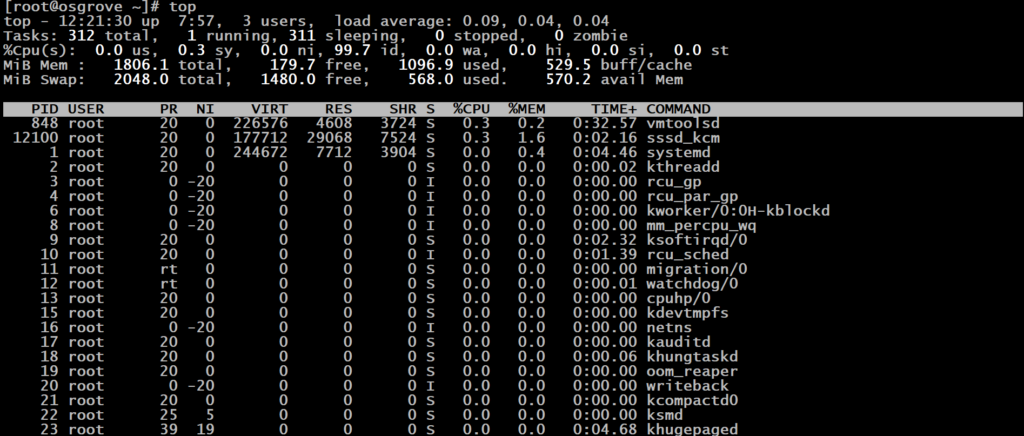top (table of process) command allows users to monitor processes, CPU information and memory utilization in Linux. It is pre-installed on all linux distributions. In this article we will learn that how to use top command.
Run top command and it will show the following
top

PID: Shows each task unique process id.
PR: shows task priority
SHR: Represents the amount of shared memory used by a task.
VIRT: Total virtual memory.
USER: User name or owner of task.
%CPU: Represents the CPU usage.
TIME+: CPU Time
SHR: display Shared Memory in kb used by a task.
NI: Shows a Nice Value of task. A Negative nice value means higher priority, and positive Nice value means lower priority.
%MEM: Shows the Memory usage of task.
press “q” on your keyboard to quite from top.
Highlight Running Process in Top
When you execute top command press “z” key to highlight running processes.

Show Path of Processes
Make sure press “c” after running top command and it will show the path of processes.

Kill running process
After running Top command you can see all processes along with their process ID (PID)
If you want to kill a process,
simply run “Top” command to find your specific process ID,
Press “k” and then type your PID number
and press “enter” key to kill it.

Renice a Process
Renice is used to change a process priority.
By simply running a “top” command you can find your specific process ID.

I will renice the priority of PID 22.
Use this command “renice -n -10 p22” to change the priority of the process. You can select your own PID.
You gonna see the Old priority and new one.

That’s about it.
The post Use of Top Command in Linux appeared first on Osgrove.
Discover more from Ubuntu-Server.com
Subscribe to get the latest posts sent to your email.



